#mohács
Explore tagged Tumblr posts
Text

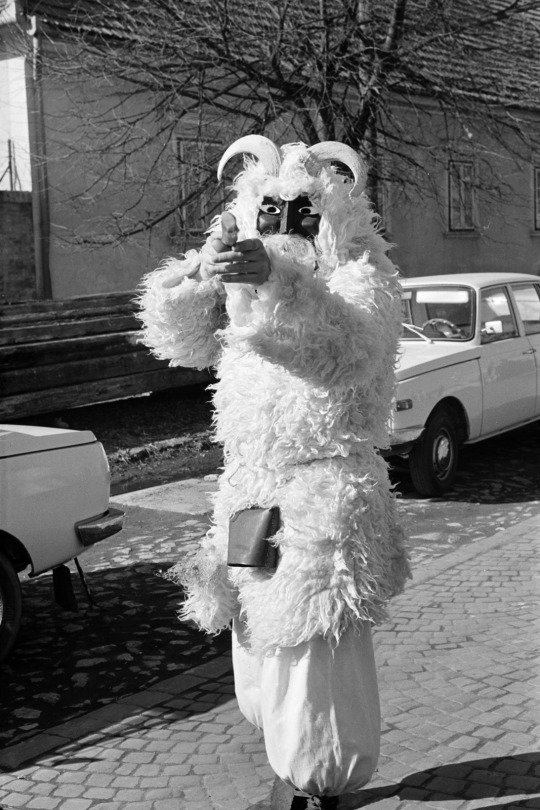
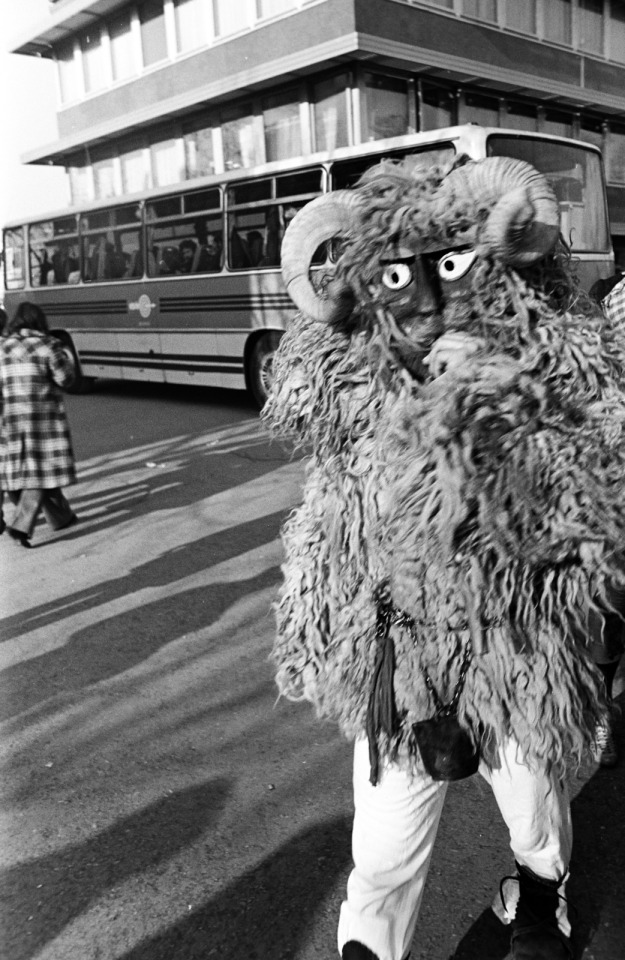
Busó festivities in Mohács, 1975. From the Budapest municipal photography company archive.
309 notes
·
View notes
Text
Busójárás - festival hongrois pour faire peur à la fin de l'hiver
Nouvel article publié sur https://www.2tout2rien.fr/busojaras-festival-hongrois-pour-faire-peur-a-la-fin-de-lhiver/
Busójárás - festival hongrois pour faire peur à la fin de l'hiver
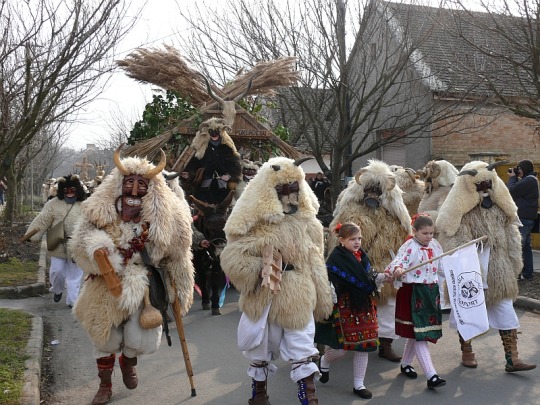
0 notes
Text
Szili nem kapott pogácsát a Tisza sajttáján
vagy mitől lett ilyen seggfájós, hogy már a második fikacikket rittyenti (and counting, as of 21:00. március 11.) a Tisza március 15.-i beharangozó klippjével kapcsolatban?
0 notes
Text
NEKÜNK MOHÁCS KELL
Ha van Isten, ne könyörüljön rajta: Veréshez szokott fajta, Cigány-népek langy szivű sihederje, Verje csak, verje, verje.
Ha van Isten, meg ne sajnáljon engem: Én magyarnak születtem. Szent galambja nehogy zöld ágat hozzon, Üssön csak, ostorozzon.
Ha van Isten, földtől a fényes égig Rángasson minket végig. Ne legyen egy félpercnyi békességünk, Mert akkor végünk, végünk.
#ady endre#téli magyarország#nekünk mohács kell#magyar versek#magyar irodalom#1908#az illés szekerén#magyar néplélek.#kedvencek.
1 note
·
View note
Text
majonéz

Borsszem Jankó, 1869.06.13.

🤗☺️🌸
13/21442!!!
Mohács és Vidéke, 1894.02.11.
10 notes
·
View notes
Text

Mary (1505–1558), Queen of Hungary
Artist: Copy after Jan Cornelisz Vermeyen (Dutch, c. 1504–1559)
Date: 1500's
Medium: Oil on wood
Collection: Metropolitan Museum of Art, New York City, NY, United States
Mary of Hungary (Governor of The Netherlands)
Mary of Austria (15 September 1505 – 18 October 1558), also known as Mary of Hungary, was Queen of Hungary and Bohemia as the wife of King Louis II, and was later governor of the Habsburg Netherlands.
The daughter of Queen Joanna and King Philip I of Castile, Mary married King Louis II of Hungary and Bohemia in 1515. Their marriage was happy but short and childless. Upon her husband's death following the Battle of Mohács in 1526, Queen Mary governed Hungary as regent in the name of the new king, her brother, Ferdinand I.
Following the death of their aunt Margaret in 1530, Mary was asked by her eldest brother, Charles V, Holy Roman Emperor, to assume the governance of the Netherlands and guardianship over their nieces, Dorothea and Christina of Denmark. As governor of the Netherlands, Mary faced riots and a difficult relationship with the Emperor. Throughout her tenure she continuously attempted to ensure peace between the Emperor and the King of France. Although she never enjoyed governing and asked for permission to resign several times, the Queen succeeded in creating a unity between the provinces, securing for them a measure of independence from both France and the Holy Roman Empire[1] as well as in creating of a permanent navy for Netherlands alongside Maximilian of Burgundy and Cornelis de Schepper. After her final resignation, the very frail Queen moved to Castile, where she died.
#portrait#queen of hungary#mary of hungary#mary of austria#queen consort of hungary and bohemia#governor of the habsburg netherlands#jan cornelisz vermeyen#dutch painter#european art#16th century painting#oil on wood#fine art#artwork#oil painting#painting#dutch culture#dutch art#historical portrait
8 notes
·
View notes
Video
Busó Expressz por tau280 Por Flickr: 2016.02.07. Vokány M61 006 Az M61 006 és M61 001 továbbtja a MÁVNosztalgia által szervezett Busó Express-t Mohácsra a Busójárásra. A kép Pécs és Villány között készült Vokánynál. MÁV M61 006 and M61 001 is going from Budapest and Pécs to Mohács at Vokány with special train "Busó Expressz" MÁV M61 006 und M61 001 fahren von Budapest und Pécs nach Mohács bei Vokány mit dem Sonderzug "Busó Expressz"
5 notes
·
View notes
Text
Azt hittem, hogy majd szépen kimossák a fülemet és visszatér a rendes hallásom. De nekem Mohács fülkürthurut kell...
4 notes
·
View notes
Text
Final Result(s)
The time has come, lads and lasses! It's been a number of weeks, but we finally have our Ultimate King of Hungary (before Mohács). And who is that amazing, unparalleled ruled that has absolutely trounced every opponent (in these polls, that is)?
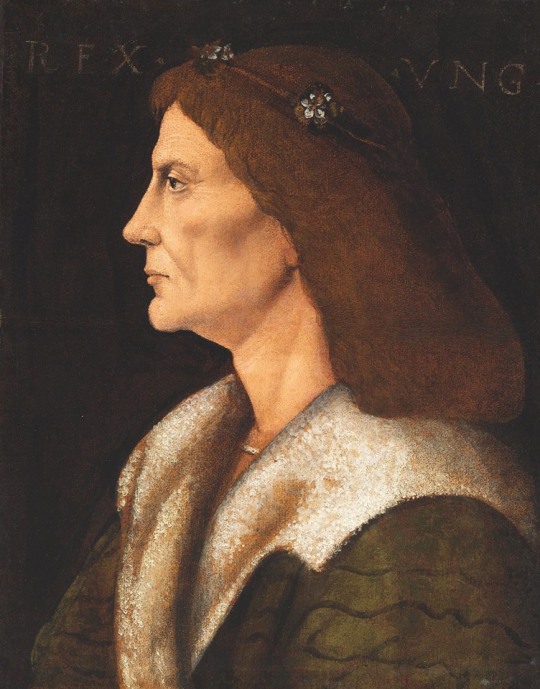
It's him. Of course it's him, who did you think was going to win this one, III.András?!
Anyway, we also had two bonus polls, and we'd be remiss if we didn't also mention their winners.
First off, there was the Anti-Habsburg Antiking contest. We decided to do away with the Bethlens and Bosckais (sorry to all the Bethlen, Bocskai, the other Rákoczi and Thököly stans out there) and instead just straight up pit the two most iconic candidates against each other. As a result, Rákoczi Ferenc and his moustache trounced Szapolyai János - and I don't suppose any of the others would fare better, though it would be funny to see Thököly get, like, zero votes. Anyway, we might do something with that somewhere down the line. For now, congrats, Ferenc, you're the best alternative we ever had to the Habsburgs.

The second poll was in our opinion more well-constructed, and also asked better questions: namely, who is the TRUE father of the Hungarian nation? That one was pretty decisively won by Árpád (other options included Levedi, Álmos, I.István, "nationalism wasn't invented yet, dumbass", and Other). Painting by Feszty Árpád, from around 1900, just to rub it in that "nationalism wasn't invented yet" was in fact the correct option. (Kidding. Unlike the Hungarian government of the 19th century, we are not in fact in the business of dictating people their national identities - if y'all say Árpád is the Father of the Nation, I believe you.)

But to be honest, I am not quite ready to part with this sideblog quite yet. So before I send you on your merry way, I have one last question for y'all...
26 notes
·
View notes
Text
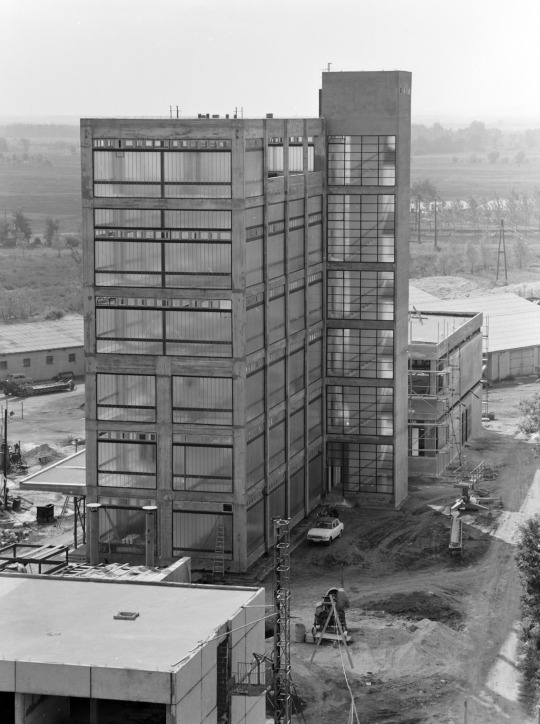
Baranya County grain purchase and processing company plant, Mohács, 1973. From the Budapest Municipal Photography Company archive.
245 notes
·
View notes
Text
Taking a Cure and Breaking Carlsbad
Because there is really nothing new under the sun at the end of the day, some people were just as obsessed about their health as they are now.
CW for discussion of historical atrocities and capital punishment.
Taking the Waters
It was believed in the 19th century and indeed for a few centuries before that "taking the waters" from wells in certain inland towns with natural springs was good for your health. A lot of places had gained this reputation, like Bath in England and Spa in Belgium. Yep, that's where the name comes from.
You could either drink the waters, bathe in them or both. This was segregated by sex, as you would generally be naked in the latter case.
The arrival of the railways made "taking a cure" a good deal easier. Bath was connected to London by the Great Western Railway and today you can get there by 125mph train in under 90 minutes from Paddington.
So, many of the rich and famous would take holidays in these places, where they would drink the water, go on a restricted diet, take long walks and undergo various treatments, prescribed by spa physicians.
Some of these were medically sound. Some come across as quackery of the first water, pun fully intended.
Treatments included - and you can still find many of these in modern day spa facilities - mud baths, massages, seaweed wraps, steam rooms etc. There was also something called a Vichy Shower, which involves lying on a slab while being sprayed with water from multiple nozzles in a shower bar.
Yes, Vichy in France is a spa town. The reason the collaborationist government went there in 1940 is because it had a lot of hotels to put everyone up.
Karlovy Vary
Anyway, Carlsbad was the former English spelling of Karlsbad, a town in Bohemia then under Austrian rule. You may know it better under its modern name of Karlovy Vary, today in Czechia (aka the Czech Republic, its long form name), about sixty-six miles west of Prague. It has an airport, but the flights are limited there - you will generally need to go to Prague, then get a coach or train.
Three American places and one in Canada still bear the name Carlsbad, the most notable being the coastal city in California, now home to a Legoland.
The name in both German and Czech means "Charles' baths".
While there were settlements in the area going back to the Bronze Age, legend has it that Charles IV, King of Bohemia, found a warm spring by accident while exploring the local area and the waters healed his injured leg. In any event, he gave the place royal privileges in 1370.
His successor, Wenceslaus IV, would give the town a right of asylum and the place also had a ban on carrying weapons.
In 1526, Louis II would drown as he fled defeat by the Ottoman Empire at the Battle of Mohács, ending his dynasty as he had no legitimate children. Austrian Ferdinand I was elected as his successor and to cut a long story short, Bohemia lost its independence, becoming part of the Austrian Empire.
The 16th and 17th centuries weren't great for the place; a massive flood, a big fire and Swedish troops looting the place three times in seven years during the Thirty Years' War.
In 1819, the town would hold a conference of representatives from the states of the German Confederation, passing decrees increasing press censorship and banning nationalist societies among other things in an attempt to slow moves towards unification.
In the event, that unification would happen in 1871, but Austria would be excluded from the new Germany and instead unified with Hungary in the Dual Monarchy, aka Austria-Hungary. Karlsbad would be in the Austrian part of this new Empire and was in fact majority-German speaking.
Anyway, back to Karlsbad. The town was rapidly developing in popularity as a resort during the course of the 19th century and would become even more popular in 1870, when a railway line was built from Prague to Eger (now Cheb) on the border with Germany.
The railway line allowed for through carriages to operate from across Europe. In 1888, it took a day and 8 1/2 hours to get there from London. By 1911, CIWL was offering a through sleeping carriage, along with parlor/dining car from Ostend to Carlsbad, the former reachable from Charing Cross via train and ferry. The journey was now doable in 26 hours and 21 minutes.
The appeal for spa fans was clear - 80 springs with water running up to 74 degrees Celsius. Mineral water and herbal bitters were bottled and exported all over Europe. The mountain scenery and fresh air allowed people to take walks as part of their "cure."
The best-known spa by the Raffles time was the Imperial Spa, of which more later.
There were also plenty of hotels or pensions. The September 1888 Bradshaw's Continental advertises eight of them, with no less than seven boasting of English-speaking staff or indeed managers. The most famous hotel, opened in 1701 and still going strong in 2024 is the Grandhotel Pupp, which featured extensively in the 2006 James Bond film Casino Royale where it played the Hotel Splendide. Indeed, Karlovy Vary has a big starring role in that film.
Churchgoers were well-provided for, with churches for multiple denominations. The Anglican one is now a waxworks museum of all things.
Many rich and famous faces would show up at Carlsbad and nearby Marienbad. Chopin and Beethoven visited there. Anthony Joseph Drexel, founder of what is now J. P. Morgan & Co visited there in 1893... then had a fatal heart attack.
As the Redux points out, all these rich people were prime targets for thieves.
An 1884 guide to the place can be found here:
Things were going pretty swimmingly for the spa town... and then the First World War happened, rather damaging the tourist industry.
The collapse of Austria-Hungary saw the town incorporated into the new country of Czechoslovakia following the Treaty of Saint-Germain-en-Laye in 1919. Local protests in March 1919 ended in six deaths after things turned violent and Czechoslovak soldiers opened fire, but the local population of what was now Karlovy Vary soon accepted their new situation. A 1930 census made clear that the place remained overwhelmingly German in its composition.
The place didn't recover to its pre-war popularity; the Great Depression really didn't help in that department. The German-speaking areas of Czechoslovakia had a lot of industries, like toy-making, which were reliant on exports... and protectionism was now very much in vogue. There were also tensions between the German minority and the Czech majority.
Then a certain Austrian man with a toothbrush moustache came along. Karlovy Vary was in what was becoming known as the Sudetenland... and you can probably see where this is going.
In September 1938, the Munich Agreement, signed without the Czechoslovaks being involved (who had to accept it), saw the Sudetenland handed over to Germany. By March 1939, the Germans had invaded and annexed the rest of the Czech part of the country, Poland and Hungary had taken various bits of territory and a pro-Axis client state was set up in what was left of Slovakia. However, it does not seem there was any mass support for this by the Germans of Karlovy Vary.
The Nazis set up the Protectorate of Bohemia and Moravia in the Czech bits they'd got in March 1939.
While a full discussion of their horrific rule is beyond the scope of this post, Karl Hermann Frank, born in what was then Carlsbad, would be placed in charge of the Nazi police apparatus in the protectorate. He would eventually become Minister of State, the most powerful official in it and in these roles would play a primary role in the mass murder of the Jewish population in the Protectorate. He would also give the orders to destroy Lidice and Ležáky, murdering nearly all their inhabitants, in reprisal for the assassination of Reinhard Heydrich in 1942.
Karlovy Vary would play host to a Gestapo prison; I imagine the town also saw some use by soldiers on leave.
Karlovy Vary was out of the effective range of Allied bombers for much of the war but came under heavy bombing twice in the final months of the conflict; bombers heading for Dresden in February 1945 appear to have also bombed Karlovy Vary (and Prague) by mistake. The town was heavily damaged, but the spa part escaped destruction.
Karlovy Vary was part of an agreed stop line for George S. Patton's Twelfth Army Group in May 1945 as they raced east. They met some resistance as they approached (namely the dangerous 88mm guns that had to be taken out individually), but the town surrendered without a fight on 7 May 1945; German forces there just wanting to surrender to the Americans and not the Red Army, who would treat them much worse.
However, it had already been agreed that this would be an area under Soviet occupation and Patton's forces had to cross back over the restored border into Germany, handing the place over on 11 May.
The Czechoslovakian-government-in-exile had declared its German and Hungarian minorities collectively responsible for the occupation. The Allies at the Potsdam Conference agreed that Germans east of their new borders should be transferred in an orderly fashion to Germany i.e. expelled.
It would be anything but orderly. Many had already fled west to get away from the Soviets, either in organised evacuations or on their own initiative, the later continuing after the surrender. At least 100,000 civilians died in this flight from aerial attack or other causes, such as the atrocious winter of 1944-45.
Now, Czechoslovakia would kick out nearly all the rest. Germans and Hungarians had their land seized, their citizenships revoked and were sent west or north; around 1.3 million and 800,000 respectively.
Mobs and those in uniforms engaged in massacres with varying degrees of official connivance; with the harsh conditions of the expulsion as well, it is estimated by a joint German-Czech commission that 15,000 to 16,000 died, along with another 3,400 suicides.
Others ended up in internment camps, also with harsh conditions.
Those who could prove they were anti-fascists or who were essential for the economy, a number estimated up to 250,000, were allowed to stay. In other cases, Communist Party redistributed assets to Czechs in the border areas, getting a lot of support in post-war elections as a result.
The expulsion/deportation remains something of an elephant in the room in the now three countries - it was historically a much bigger issue. West Germany paid compensation to those thrown out from its own funds and the international community concluded that Czechoslovakia taking their assets meant that no reparations needed paying. A Czechoslovak law granting immunity for crimes committed in 1945 in the name of liberation remains in force. A joint agreement in 1997 saw Germany accept responsibility for Nazi crimes and Czechia express regret for the deaths in the expulsions; various attempts at reconciliation have happened. The surviving Sudeten Germans do not want their land back in general, just official recognition.
The events have come up from time to time in the politics of the area, but I shall leave that discussion for others to have.
In the aftermath, the Czechoslovaks also conducted war crimes trials of those who had engaged in such horror upon their country. Karl Hermann Frank, captured by the Americans the day after the war ended, was extradited back to Czechoslovakia, and sentenced to death by the People's Court in Prague. On 22 May 1946, he was executed in front of 5,000 people in the courtyard of Pankrác prison; it was a ticketed event with "scalpers" to boot in what would be the final public execution in Prague. It was also photographed and filmed for the media; the footage can be found easily online, so you may not want to look this up. Especially as the method of hanging was the Austro-Hungarian pole method, not a pleasant way to go.
The Communists, starting to lose popularity, sized power in a coup in 1948 and created a Soviet-aligned state.
The Grandhotel Pupp had already been nationalised, the Pupp family having been expelled and was renamed the Grandhotel Moskva in 1951.
The Karlovy Vary Film Festival began in 1946 and quickly became prominent after it introduced an international film competition two years later, by 1956, it was a top-tier festival, up there with the likes of Venice and Cannes. Moscow got jealous and forced the festival to go from annually to bi-annually; it alternated with the festival in the Soviet capital until 1993.
The need for "hard currency" such as the West German mark to be used to pay for imports into the CSSR meant Karlovy Vary continued to market itself to foreign tourists, especially West Germans. The erection of the Iron Curtain made travel to and from Czechoslovakia a lot harder, as you now needed a visa to go there from the West; there was also a mandatory foreign exchange requirement, although paying for the hotel could cover that. East Germans, who could travel to Czechoslovakia without the need for a visa, seem to have found Karlovy Vary too expensive and went to other spa towns. In any event, the Soviet invasion of 1968 that ended the Prague Spring damaged visitor numbers further, not to mention destroying the credibility of much of the Eurocommunist movement, who mostly parted company with Moscow in short order.
As for the Imperial Spa, built in 1895 and known as Spa I since 1922, it had been renovated in the late 1940s so it could operate all-year round and declared a cultural monument. However, increasing maintenance costs meant it stopped operating as a spa in the late 1980s, becoming a casino, falling further into disrepair.
Things, however, were about to improve. The Velvet Revolution of 1989 saw the largely peaceful end of the Communist government (a lot of people were beaten up by security forces, but no-one died, although a hoax story of a death played a key part) and Czechoslovakia's return to democracy. It became two democracies in short order; it became clear that the Czechs and Slovaks had different ideas of the direction of travel for their country, so the Velvet Divorce followed in 1993, creating Czechia and Slovakia. Both countries would maintain good relationships with each other and join the EU together in the 2004; Czechia retains the koruna, having not yet joined the eurozone.
In 1990, Karlovy Vary got city status as the tourists came back. The Grandhotel Pupp got its name back - a deal being reached with the family in 1992 for use of the trademark. The film festival returned to being an annual event, only being skipped in 2020 for obvious reasons, although a shorter festival happened in November. In 2024, the Crystal Globe was won by A Sudden Glimpse to Deeper Things, a British documentary on an abstract artist called Wilhelmina Barns-Graham.
The Imperial Spa was declared a national monument in 2010 and a renovation began in 2019, allowing the place to fully reopen in 2023.
I think that's a good place to end it. I am now thinking of going there myself...
7 notes
·
View notes
Text
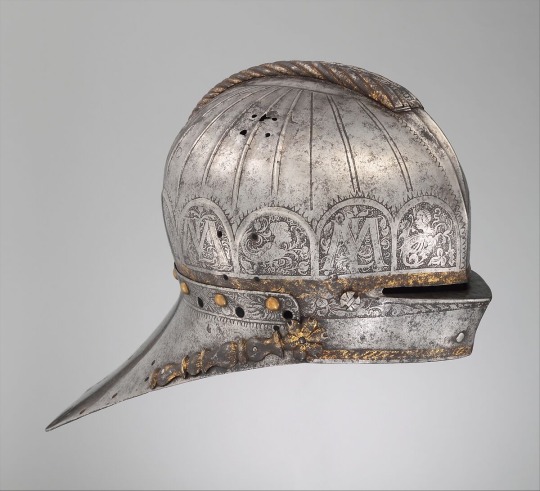
Jousting Sallet. Designed for King Louis II of Hungary. Captured by the Ottomans at the Battle of Mohács in 1526.
The Metropolitan Museum of Art.
#art#culture#military history#hungary#hungarian history#hungarian#the metropolitan#the metropolitan museum of art#the met#ottoman empire#early modern period#early modern history
5 notes
·
View notes
Text
Élettapasztalatom:
minden milliárdos egy kibaszott kötsög. A legtöbbje ráadásul pszichopata is, de minimum szociopata.
Hát hol vannak a bárók, grófok, hercegek emelkedett méltósága?!
Nekünk Mohács kell baszki.
26 notes
·
View notes
Text
NER pénzeső, Orbán papa osztalékot fizet
Nincs pénz oktatásra, egészségügyre, szociális ellátásra, tömegközlekedésre, Budapestre, a vidékre, illetve úgy általánosan rád, magyar állampolgárra nincs pénz.
Ám akad bő 250 milliárd forint a Pázmány kollégiumára, Tiborcz István zsebébe:
Továbbá van még 389 milliárd egy mohácsi Duna-hídra, mely pénz tetemes része Szíjj Lászlót gazdagítja tovább.
Ám itt nincs megállás, hiszen minden idők legdrágább magyar autópálya-szakaszát is bejelentette Lázár, Esztergom felé 32,3 kilométer mindössze 500 milliárd forint körüli összegért.
Dömper Kft., illetve Strabag, mert van, amit a NER-es hülyék maguktól nem tudnak megcsinálni.
Durván 1200 milliárd forintnyi közpénz megy a haverokhoz.
6 notes
·
View notes
Text
A tavalyi év egyik legolvasottabb Válasz Online-cikkének friss folytatása! Varga Szabolcs újra Mohácsról:
2 notes
·
View notes
